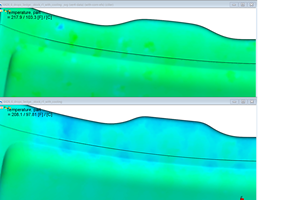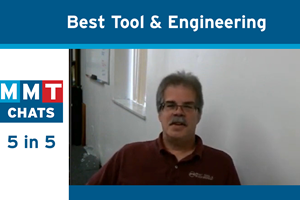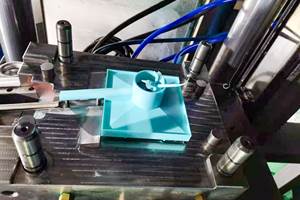An Economic Stimulus Package for Moldmakers
If yours is like most businesses in the U.S., you have no doubt been forced to re-evaluate many aspects of your business because of the slowdown in the economy.
If yours is like most businesses in the U.S., you have no doubt been forced to re-evaluate many aspects of your business because of the slowdown in the economy. You may have been forced to lay off employees due to a drop in orders, or you may have decided to make investments that will allow your business to compete more effectively when the eventual strengthening of the economy begins.
Whatever the impact on your business has been, it is probably safe to say that your company has been forced to be more competitive from a pricing standpoint. And, unless you have resigned yourself to accepting lower margins and profits, you have, and continue to look for ways to lower your cost of doing business and be more efficient with your manufacturing processes.
This is why, now more than ever, you should determine whether your company would benefit from the Research and Development (R&D) Tax Credit. The R&D Tax Credit is an incentive to encourage investment and innovation in the U.S. that leads to new or improved products and/or processes. It is a dollar-for-dollar reduction of your tax liabilities.
The definition of R&D is much broader than people realize. “Job Shops” of all kinds, including moldmakers, often believe that they don’t have R&D taking place. They mistakenly believe it’s only their customers who are doing the R&D, and that they are simply making products for their customers who provide them with drawings for products/parts. However, moldmakers CAN have substantial R&D taking place through their “PROCESS” development and improvement activities. Effective use of the R&D Tax Credit means the reduction of current and future tax liabilities, as well as improved cash flow. This typically equates to savings of many tens of thousands of dollars!
Manufacturers have had to explore opportunities in other markets to survive the recession, while others have sought to diversify in order to position themselves for growth. This often requires figuring out how to make use of and/or retooling of existing equipment. This may require you to gain expertise in working with different materials or shapes. You may be trying to accomplish this through the implementation of automation and technology. Or, your customers are downsizing and they are looking to you for more of the development and design work. This is all R&D!
Even companies that have been utilizing the R&D Tax Credit should re-evaluate the methodology they have been using, and whether they should take a different approach. Within the last 18 months, the IRS has provided more guidance about the types of documentation that companies should keep in order to support their R&D Tax Credit claim. A new calculation option is now also available, which is a better option in many cases because it only requires a company to look at its three prior year’s “qualified” expenses when computing its R&D Tax Credit. Because of this, it’s a more defendable calculation in the event of an audit because most companies will have fairly solid/fresh documentation from that time period.
Additionally, and related to the moldmaking industry, the U.S. Tax Court on November 12, 2009 overturned an earlier IRS decision and found TG Missouri (“TG”), an automotive parts manufacturer, properly included in research expenses, supply expenses related to production molds produced by a third party, in possession of TG, but sold to customers.
Related Content
Quickly Troubleshoot New Molding Defect with Moldfilling Software
SyBridge Technologies analyst compares original, new Moldflow process simulation results, solves molding defect without tool needing to be taken out of production.
Read MoreMMT Chats: 5 in 5 with Best Tool and Engineering
MoldMaking Technology Editorial Director Christina Fuges reveals 5 best practices for improving efficiencies within shops...in 5 minutes. Our guest is Joe Cherluck, President of Best Tool and Engineering in Clinton Township, Michigan. This episode is brought to you by ISCAR.
Read MoreEvaluating Metal Powders for Conformally Cooled Mold Inserts
Mechanical properties and design software techniques reveal the benefits of a modified high thermal conductivity metal powder for 3D printing in moldmaking.
Read MoreSurface Finish: Understanding Mold Surface Lingo
The correlation between the units of measure used to define mold surfaces is a commonly raised question. This article will lay these units of measure side by side in a conversion format so that companies can confidently understand with what they are dealing.
Read MoreRead Next
How to Use Strategic Planning Tools, Data to Manage the Human Side of Business
Q&A with Marion Wells, MMT EAB member and founder of Human Asset Management.
Read MoreHow to Use Continuing Education to Remain Competitive in Moldmaking
Continued training helps moldmakers make tooling decisions and properly use the latest cutting tool to efficiently machine high-quality molds.
Read MoreAre You a Moldmaker Considering 3D Printing? Consider the 3D Printing Workshop at NPE2024
Presentations will cover 3D printing for mold tooling, material innovation, product development, bridge production and full-scale, high-volume additive manufacturing.
Read More








.jpg;maxWidth=300;quality=90)
















